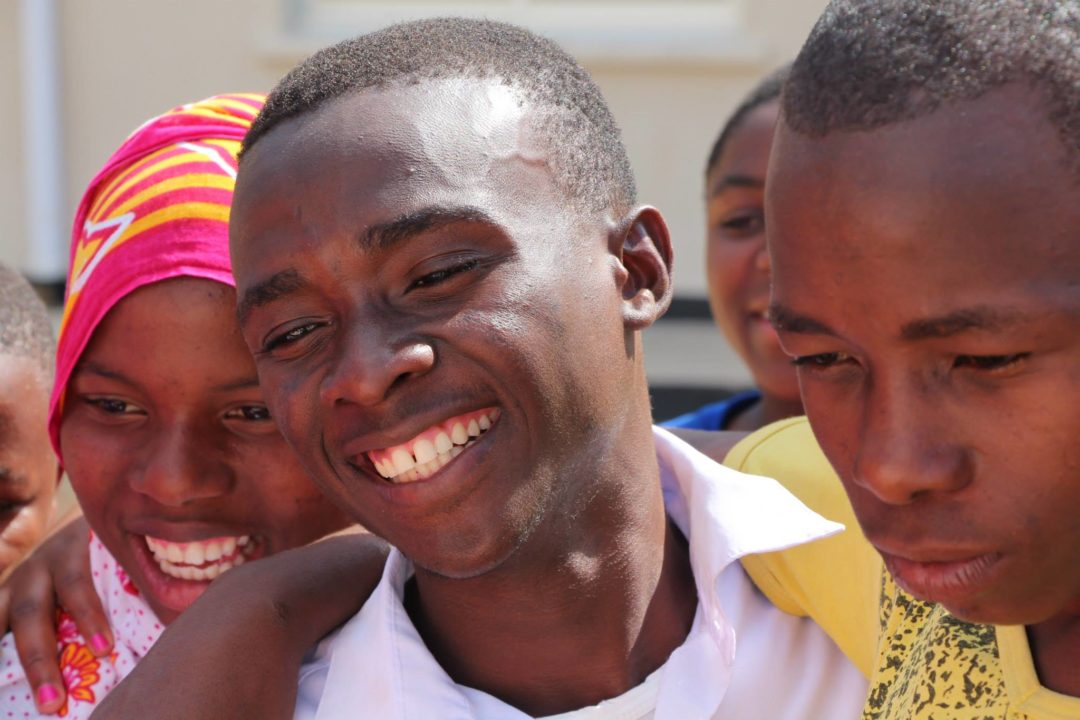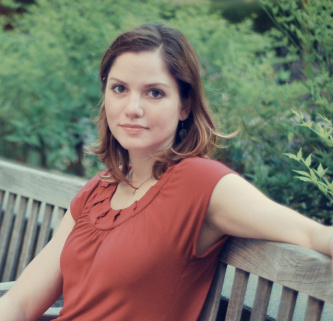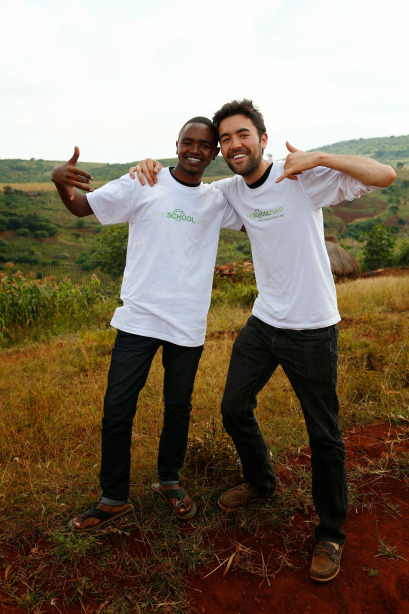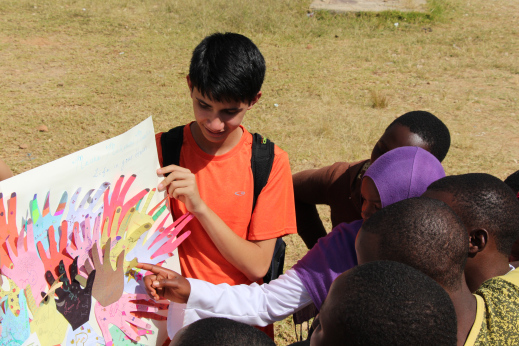Held Up at Gunpoint in Kenya: The School Fund
Categorized as: Africa, Education, Girls & women, Grantee, Our Partners, Poverty Alleviation, Stories, Youth & Tagged as: Crowdfunding, Drika Weller, InterAction, Kenya, The School Fund, Violence on August 30, 2014.

Hanging out with students from Ummu Salama School, Miyomboni Secondary School and Lugalo Secondary School in Iringa, Tanzania.
Editor’s note: The School Fund’s new CEO, Dr. Drika Weller, joined The School Fund’s team and visited partners in Kenya, supported the development of a forthcoming video with Jack’s Gap, Drika brings a strong background in international aid work and developmental psychology. She’s determined to maintain nimble operations while developing stronger partnerships and delivering more transparent reporting on impact.
Here, Drika shares a painful story about a transformative experience this summer in Kenya that brought it all home: Her deep commitment to our students was tested at gunpoint, and she had what she calls “a taste of what our students surmount in-between classes.”
We’re thrilled to continue our partnership with The School Fund and see what’s in store for this energetic and seasoned professional leading the charge on the ground.—Elisabeth Skees Deogracias, SFF Board Member
 By Drika Weller of The School Fund
By Drika Weller of The School Fund
Originally featured on InterAction. 
Face-Down in the Gravel
I lay face-down in the gravel, thrusting my cell and wallet behind me. I won’t look at them. There is shouting. When the men first approached, yelling at us to get down on the ground, I thought they were warning against danger. Perhaps it was more police action, like the tear gas that had been tossed at protesting students days before, a continuation of the unrest that began in May after an unmanageable hike in their university fees.
But these guys—the ones shouting us to the ground—were thieves, muggers.
Right before we were held up, I had been asking our students to tell me about their lives . . . We didn’t talk about their daily realities.
We’d come to Nairobi to meet with our field partners, to check on the students The School Fund crowdfunds to send to school. Right before we were held up, I had been asking our students to tell me about their lives. They spoke about home, about their studies. We didn’t talk about their other daily realities.
There was more frightened shouting from my companions. I lay frozen, the only woman in our group, and kept my face down so they wouldn’t notice me. Rape seemed like a real possibility.
I knew fear, and it’s a story that’s unsettling to tell.
It’s Our Job To Tell Stories–Real Ones
It’s our job to tell stories. As a crowdfunding site, we face a communications challenge—trying to help donors quickly identify with a student as they click through our site, and catch their attention before they click out. We show smiling faces. With the help of our partners, we select top-performing students who otherwise would drop out of school because they lack the few hundred dollars they need to cover the next year’s school fees.
These students write their own profiles and talk about their favorite books and what they’d like to do when they grow up. It’s a sunny outlook, their chance to discuss their dreams. We want to show what is possible for them, given the right opportunities.
 Matt Severson (R), Founder and President of The School Fund, with John Medo (L), The School Fund’s first student.
Matt Severson (R), Founder and President of The School Fund, with John Medo (L), The School Fund’s first student.
How Violence Impacts Our Female and Male Students Here
After traveling in Kenya, I’d been preparing to come home and write stories of the tremendous impact we’d had in their lives (because we have, I saw it). But I was going to tell the standard story—the touch-stone of nonprofit communications—the tale of the person transformed . . . with your help.
In Kenya, before adulthood, 66 percent of girls and 73 percent of boys experience physical violence.
Once the muggers were gone—all my possessions lost, but all of us physically fine—I was rattled. I couldn’t remember my boyfriend’s number. I wanted to call and tell someone I love that I was safe, but the numbers I’d dialed so many times had vanished from my mind. The cellphone where it was saved was gone. Later, once I returned home to our apartment, I would look up the rates for assault in Kenya, and learned that before adulthood, 66 percent of girls and 73 percent of boys experienced physical violence.
We hadn’t had our local partners with us for security, as we usually do. But we were granted a window into what life is like in Nairobi—a city that is among the most dangerous in the world.
It’s my job to know statistics. I knew that in Nairobi, The School Fund’s students live in Kibera, the second largest slum in Africa. There, one in four teenage girls is raped each year. We convey the overwhelming reality of our students in these sorts of figures, and so our narrative flips between the smiling young adults, so full of potential, and the statistical dark side of what must be their lives.
 TSF’s summer fellow, Jonathan Gilbert, with students in Tanzania.
TSF’s summer fellow, Jonathan Gilbert, with students in Tanzania.
The Difference Education Can Make
But as I pressed myself into the earth, terrified, I got a taste of what our students surmount in-between classes—and do so while keeping up their grades, mastering new subjects, creating hope in what sometimes must feel like a bleak world. It’s the girls in India who risk harassment on hour-long walks to school and parents who often believe early marriage to be a better—and safer—option. It’s girls and boys in Ecuador who seek an alternative to child labor. And young men and women in Haiti who lived through catastrophe and believe they can make their country stronger.
Education gives them a daily safe haven, mentors, adults who believe in their capabilities and hope for the future.
I’ll be honest. I still have trouble sleeping. But now I also better understand my job. The strongest, most powerful force in these students’ lives is education. It gives them a daily safe haven, mentors, adults who believe in their capabilities and hope for the future. It’s education that will make our students less likely to one day be strung out on drugs, holding a gun on another human being and threatening their life over a phone, some money.
And when we tell the story of our students, it will no longer follow variants on the standard formula: protagonist + barrier + our solution = life changed. Indeed, The School Fund does offer hope, our donors give what they can and do change lives, but it’s not a simple story.
Our students live in poverty, wear tattered uniforms, and pour themselves into their school books at the same time that they face abuse at home, unrest in the streets, and violence around street corners.
All that makes the dollars we crowdfund more valuable.
Our solution—education—takes time. Its benefits are measured in lifetimes and its narrative arc is nuanced. But within a generation, our students can break the most tragic cycles. With education, employment opportunities are broadened, income levels are increased and maternal and child health is improved. We see young men and young women with education changing their trajectories.
That is the story I now understand we need to tell. Our students continue making good for themselves within hardship. And that is nothing short of heroic.
Drika Weller is CEO of The School Fund, an organization that crowdfunds to support the school fees and other educational costs of high-performing but needy students in 15 developing countries. Weller holds a PhD in developmental psychology and previously spearheaded programmatic work in Sub-Saharan Africa through USAID.
Photos courtesy of The School Fund.
To read about the beginning of The School Fund, click here.
LEARN more about The School Fund here.
SHARE this story with your networks; see menu at top and bottom of page.
DONATE to support students in the developing world by clicking here.
SUBSCRIBE! Like what you see? Click here to subscribe to Seeds of Hope!
